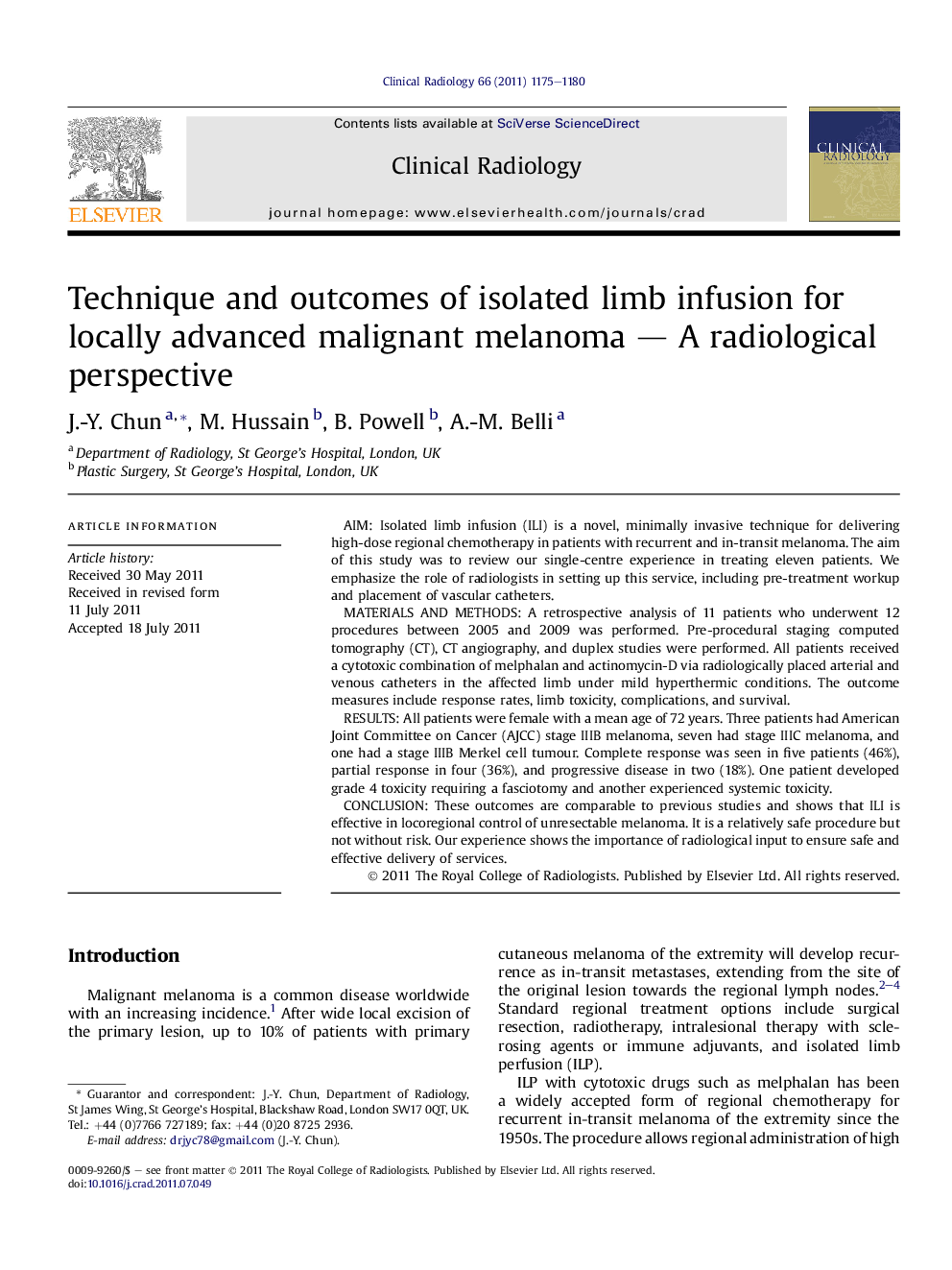| کد مقاله | کد نشریه | سال انتشار | مقاله انگلیسی | نسخه تمام متن |
|---|---|---|---|---|
| 3982411 | 1257726 | 2011 | 6 صفحه PDF | دانلود رایگان |

AimIsolated limb infusion (ILI) is a novel, minimally invasive technique for delivering high-dose regional chemotherapy in patients with recurrent and in-transit melanoma. The aim of this study was to review our single-centre experience in treating eleven patients. We emphasize the role of radiologists in setting up this service, including pre-treatment workup and placement of vascular catheters.Materials and methodsA retrospective analysis of 11 patients who underwent 12 procedures between 2005 and 2009 was performed. Pre-procedural staging computed tomography (CT), CT angiography, and duplex studies were performed. All patients received a cytotoxic combination of melphalan and actinomycin-D via radiologically placed arterial and venous catheters in the affected limb under mild hyperthermic conditions. The outcome measures include response rates, limb toxicity, complications, and survival.ResultsAll patients were female with a mean age of 72 years. Three patients had American Joint Committee on Cancer (AJCC) stage IIIB melanoma, seven had stage IIIC melanoma, and one had a stage IIIB Merkel cell tumour. Complete response was seen in five patients (46%), partial response in four (36%), and progressive disease in two (18%). One patient developed grade 4 toxicity requiring a fasciotomy and another experienced systemic toxicity.ConclusionThese outcomes are comparable to previous studies and shows that ILI is effective in locoregional control of unresectable melanoma. It is a relatively safe procedure but not without risk. Our experience shows the importance of radiological input to ensure safe and effective delivery of services.
Journal: Clinical Radiology - Volume 66, Issue 12, December 2011, Pages 1175–1180